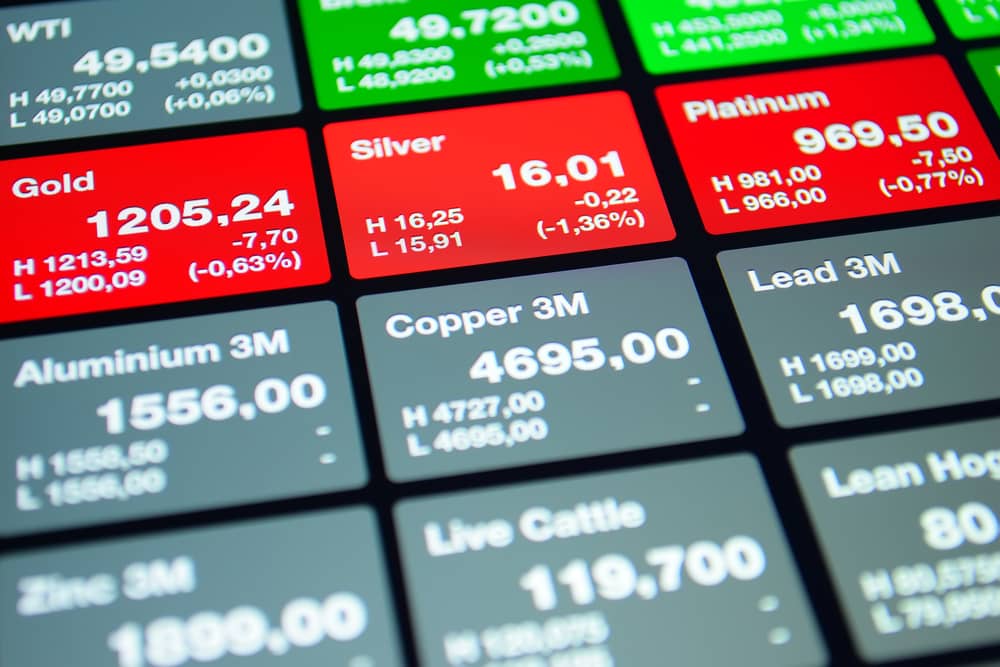Rising geopolitical risks and stickier inflation are forcing fund selectors to look at commodity ETFs as a key portfolio construction tool.
Demand for commodity ETFs has been weak so far this year as investors rotated out of the asset class amid forecasts of falling inflation and a US recession.
According to data from ETFbook, commodity ETFs saw $111m outflows in Q1 versus a combined $19bn inflows for equity and fixed income ETFs.
However, stronger-than-expected US inflation last week sent markets into a spin, with 10-year US Treasury yields rising to their highest level since mid-November in the sharpest one-day move since September 2022, according to Deutsche Bank.
Furthermore, geopolitical tensions in the Middle East continue to mount after Iran launched over 300 missiles towards Israel last weekend in response to its attack on the Iranian embassy in Syria in March.
While reaction has been muted so far, any escalation in the conflict will add further pressure on oil prices. Markets now wait for Israel’s response, a key geopolitical risk that could stoke headline inflation across the globe.
“I continue to believe that it is going to be incredibly difficult to smoothly land this US economic cycle given we have moved from the biggest increase in money supply since World War II to the biggest contraction since the 1930s,” Jim Reid, head of global fundamental credit strategy at Deutsche Bank, said.
“The added complication at the moment is the heightened uncertainty in the Middle East.”
These two factors create a headache for fund selectors positioning for US interest rates cuts, however, adopting a barbell approach with commodity ETFs to protect against the risks is one option in the playbook.
“We remain overweight commodities,” Giorgio Broggi, quantitative analyst at Moneyfarm, told ETF Stream. “They provide a great hedge in a macro environment where inflation risk is still relevant and against geopolitical risk.”
Echoing his views, Enrico Girotti, portfolio manager at Banca Patrimoni, said the firm has recently allocated to the UBS ETF CMCI Composite SF UCITS ETF (CCUSAS) to capture the bounce in the asset class.
“Major risks and disruptions to the supply chain may arise mainly from geopolitical concern,” Girotti explained. “Conflicts across the globe can cause short term volatility in every asset class.
“Moreover, given the crucial importance of territories involved in conflicts as commodity hubs, risks are highly associated with supply side disruptions with additional inflation pressures that can deeply affect monetary policy decisions.”
Gold ETCs
Gold exchange-traded commodities (ETCs) are an obvious option for investors looking to protect against geopolitical risk.
The two largest gold ETCs in Europe, the $15.5bn Invesco Physical Gold ETC (SGLD) and the $14.9bn iShares Physical Gold ETC (SGLN), are tough to separate as both carry fees of 0.12%. DWS offers the cheapest gold ETC on the market via the Xtrackers IE Physical Gold ETC Securities (XGDU) which has a total expense ratio (TER) of 0.11%.
Commodity ETFs
For investors looking for broader exposure, the latest broad-based commodity UCITS ETF is the $2.5bn Invesco Bloomberg Commodity UCITS ETF (CMOD) which offers straightforward synthetic exposure to a basket of commodities including, energy, grains, precious metals, industrial metals, softs and livestock.
Another option is the Amundi Bloomberg Equal-weight Commodity ex-Agriculture UCITS ETF (CRB) which offers equal-weight exposure to a basket of commodities, a move that introduces greater exposure to more esoteric parts of the asset class such as Zinc (9.3%) and Nickel (9.1%).
There has also been an increase in multi-factor commodity ETFs that look to target cyclical demand for particular exposures. One such ETF is the L&G Multi-Strategy Enhanced Commodities UCITS ETF (ENCO) which shifts its futures allocations to commodities at heightened periods in their production such as heating oil during winter.
ENCO – along with some other commodity ETFs – employs a roll yield factor to invest in energy and industrial metals when futures curves are offering the best-implied roll yield.





